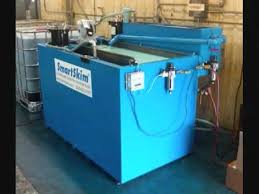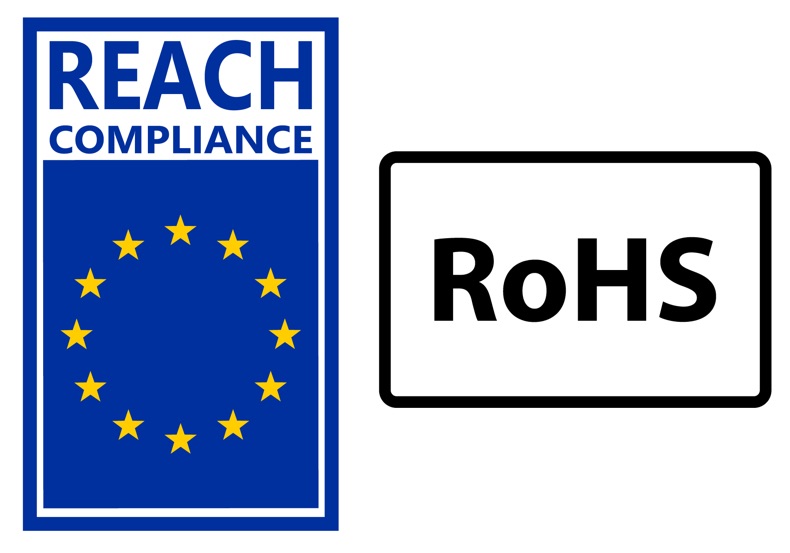May 28, 2020
Explaining the Reach and RoHS Directives
Here in the United States we have probably seen a statement of either REACH or RoHS on a product that we have purchased whether it be an electrical device, or a machined casting. This standard is a somewhat foreign matter to us here in the United States but in the European Union countries such as England, France and many other foreign markets REACH and RoHS compliance is very important for goods that are being sold or being used as components within their markets.
If goods are not compliant with these standards some companies will not use them at all; in order to effectively communicate to consumers, REACH and RoHS certificates and certifications are needed and requested to show a product’s RoHS and REACH status. Most companies have their own RoHS and REACH Statements, all but effectively saying that the company is in compliance with the directives that have been set out within each of the statements. These directives are regularly reviewed and updated, and each company that states their products are in compliance must continuously update their records and maintain that even new substances that are added to the directive are not prevalent within their products. It is so important, that companies even mandate to their own suppliers and vendors that they all will utilize these directives in the manufacture of their products.
Slowly, but surely, we are seeing these same standards being applied here in the US, so it would be beneficial to know just a little bit about it in case someone asks if you if the components, cable, connectors, assemblies or connector ovens you are using are REACH, and/or RoHS Compliant. So, even though the misconception is that REACH and RoHS is the same directive with the same purpose, they are not, and below we will go into a little explanation of what each statement is and what goes into the compliance policy of each REACH and RoHS.
REACH
The REACH or Registration, Evaluation, Authorization and Restriction of Chemicals statement was ultimately designed and implemented on June 1st, 2007 to improve protections for humans and animals from modern day chemical substances that posed a large health and environmental risk within the European Union. This also showed support for methods outside of the standard that allowed for alternative testing methods that did not involve harming animals as a result of testing. While for our purposes the REACH regulation is used within the machining and castingc world but in reality, REACH is applied to every single chemical that we see on a daily basis. REACH affects almost every single industry that utilizes any type of chemical compound. In adherence with the REACH Standards, companies must prove that a chemical can be safe, by collecting information and risks that are associated with using that chemical and also addressing the potential safety risks that are posed to human beings if the chemical is utilized. Chemicals can be accepted, restricted or put on a complete ban pending evaluation by an independent panel. If chemicals are deemed too dangerous to the public it is the responsibility of the user to phase these chemicals out and replace them with a safer chemical alternative that is more widely accepted. Most companies are somehow directly or indirectly involved with REACH Compliance and thus have the responsibility to follow the REACH directive if they are selling or supply any component within the European Union.
Some Chemicals restricted under REACH –
- Substances that are carcinogenic, mutagenic or toxic for reproduction
- Methoxyethyl acetate
- Tert-butylphenol
- Fluoranthene
- Pyrene
- Benzene
- Pyclohexyl phthalate
- Fluoranthene
- Lead
- Cadmium carbonate
- Chrysene
RoHS
Restriction of Hazardous Substances, this standard also known as the Directive 200/95/EC is another European standard that has found its way into adoption in the United States. This directive impacts primarily the electronics industry and electronic parts and pieces. It restricts certain listed substances from being used within electronics or, at least be utilized within a certain restricted amount. We will go into the amounts further down in this article. RoHS was adopted so that electronic devices would be designed using environmentally friendly chemicals; chemicals that would not pose a hazard to people or the environment in their usage or when they are at end of life and must be recycled.
This directive has been in place within the European Union since 2003, with RoHS 1 being adopted in 2006. The initial RoHS compliance directive was limited to only six chemical substances that were found to be hazardous - Lead, Cadmium, Hexavalent Chromium, Polybrominated Diphenyl Ethers, and Polybrominated Biphenyls. As times have changed, and substances have been added, we are now on RoHS 3, adding further substances to the list.
RoHS and REACH compliance with these restrictions falls on the manufacturer of the electronic equipment, and all items that have the RoHS certification must have supporting evidence that shows these listed substances are not prevalent within the materials. Each company should have their own declaration showing that their goods are RoHS compliant. All electronics that are sold to the European Union must comply with the RoHS directives, but this directive is gaining speed in other countries outside of Europe as well.
The items that the RoHS directive restricts or limits the use of are outlined in the below list –
- Lead (Pb): < 1000 ppm (1)
- Mercury (Hg): < 1000 ppm
- Cadmium (Cd): < 100 ppm (1)
- Hexavalent Chromium: (Cr VI) < 1000 ppm
- Polybrominated Biphenyls (PBB): < 1000 ppm
- Polybrominated Diphenyl Ethers (PBDE): < 1000 ppm
- Bis(2-Ethylhexyl) Phthalate (DEHP): < 1000 ppm
- Benzyl Butyl Phthalate (BBP): < 1000 ppm
- Dibutyl Phthalate (DBP): < 1000 ppm
- Diisobutyl Phthalate (DIBP): < 1000 ppm
While we may see these markings as consumers and they might not mean much to us as we go about our everyday lives, as a manufacturer or reseller, these directives are important, and it would be wise to be aware of and understand how they can affect the manufacturing and selling processes. These directives are meant to try to keep us safe from unnecessary harmful chemicals in our electronic products, and to insure that they are disposed of properly.






